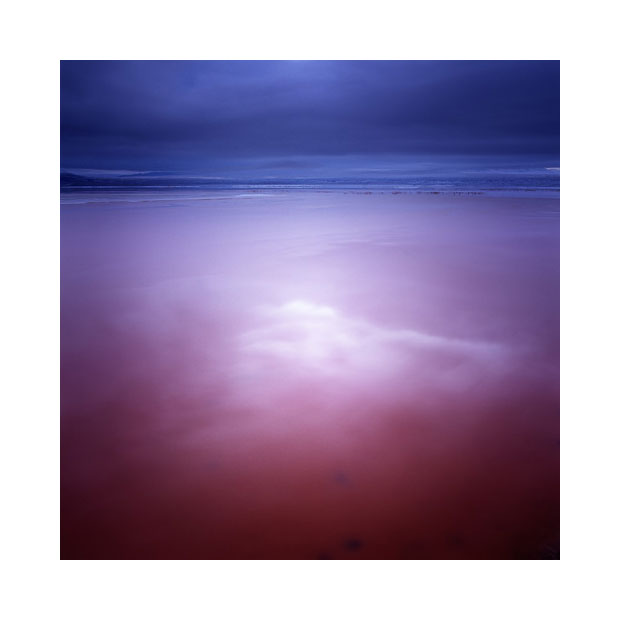In my post from a few days ago, I suggested that as part of the 'searching' we do as photographers, we tend to make many interpretations of the same subject.

I love to do this even with subjects that, on the surface, seem to offer very little opportunity to do anything more, other than the obvious.
What may appear to need only one shot to covey a message, seems to spur me on to go looking for something more.
Take the images here of Laguna Colorada in Bolivia. One could be forgiven for thinking that there is possibly only really one image to be made here. There is no background or foreground subject matter and there are no interesting rocks to place in the foreground. So why would I shoot more than one 'interpretation' of it?
I believe the answer has to do with how we react to each image emotionally. The subject matter may be similar, but through variances in tonality and form, the emotional message is different.
I didn't need to change the composition too dramatically between both images. All I had to do, was watch and listen to the changes inside of me, as the light altered the landscape before me.
I could argue that having less material in front of my lens to shoot, made this a much simpler task to do. The less visual stimulation we have to process, the easier it is for us to notice changes, especially if they are small ones.

I was torn as to which image to choose as a candidate for the final portfolio. I decided to select both. Although to some, it may seem as though I have already told the story once, and need not do it again, the truth is that for me, both these images speak to me in different ways.
I believe that when we are making images of the landscape, our emotions tend to mirror the variances in light, shade and tone that we encounter. We are emotional beings and we are responding to our environment all the time. Light and colour are sounding boards, used to reflect back to us what we are feeling.
Some people talk about images being quiet, tranquil. Others will describe images as tense or relaxed. When we do this, we are essentially describing ourselves, how we feel as we respond to the work we are viewing. The photograph is not calm, you are. The photograph is not tense, you are. Good photographers know this deep down and they understand how colour and tone can be used to affect our moods and our feelings, just like a musician knows he can affect our moods by playing a minor or major chord.
For me, I felt I was trying to convey a sense of 'approaching silence'. Each iteration that I made whilst at the edge of this lake felt like an attempt to get closer to this notion. Ultimately, I was attempting to capture a mood, a feeling. Unwittingly, I was attempting to capture my very own thoughts.
